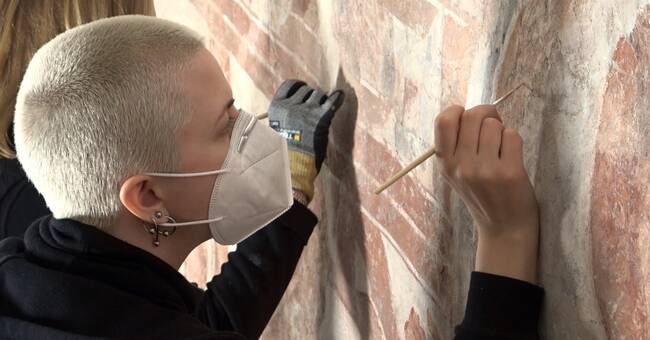The chalk paintings are among the most well-preserved paintings in Europe from the early 12th century, according to Hanna Eriksson, who is one of the painting conservators who has now taken on the paintings in Finja church.
The paintings are attributed to Finjamästaren, sometimes also called Finjagruppen, an anonymous workshop that was active in Skåne and Zealand.
The paintings depict the blessed standing before Christ, angels playing the trumpets and the dead rising from their graves.
- When they were painted, they were very important in terms of storytelling for the congregation.
They understood exactly what all these pictures represented.
We may not do that today, but we can see the historical value in them and the art historical value, says Hanna Eriksson.
The paintings were covered
Sometime in the 17th or 18th century, the paintings were whitewashed.
- Maybe it was because the paintings were dirty with soot from candles, or it was connected with the Reformation - that they wanted a different language of expression in the church based on becoming a Lutheran church, says Sara Ericsson who is pastor in Tyringe pastorate.
The paintings were then covered until the 1930s when they were produced again.
- They were in such good condition and so nice that it went through the cultural world in Europe that "Romanesque paintings in Finja church are in very good condition", says Sara Ericsson who also says that even today there are usually tourists from all over Europe who want to see the paintings.
Finja church was built in the 12th century and somewhere between 1125 and 1150, the Finja master, sometimes called the Finja group, painted a painting in the choir and the triumphal arch.
Photo: Erika Dahlin Jönsson / SVT
Closed church
The church has been held since 1 August 2020 due to the work with the paintings.
- Most likely we will have closed the church for the first Advent this year, to be able to get everything in order.
It is a slow project, says Sara Ericsson.

